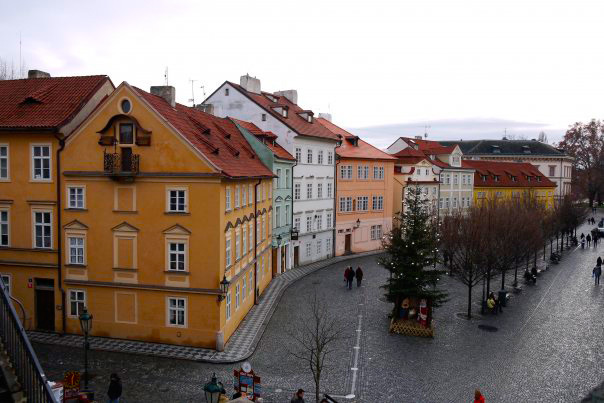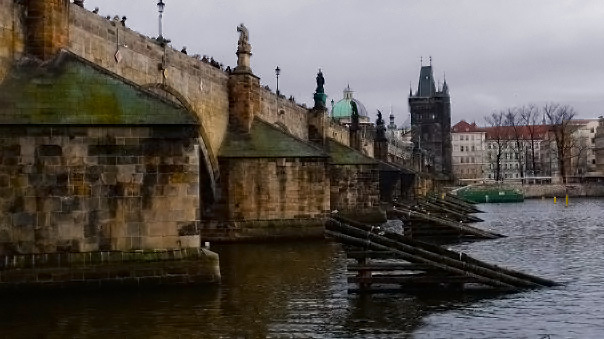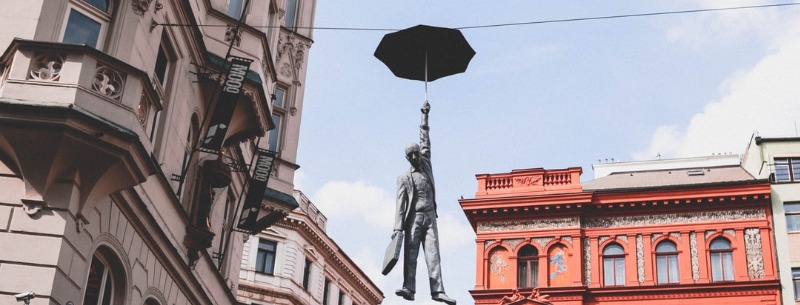Things to Do in Prague for FREE
Prague has an Old World charm as well as a burgeoning modern art scene. Restaurants serving both traditional and international cuisine are available. Historic structures coexist with modern architecture. In a beautiful way, old and new coexist.
Once upon a time, Prague was a budget traveler’s paradise. Beautiful as Paris, with London-style pubs at bargain basement prices. Unfortunately, this is no longer the case; budget airlines and increased awareness have elevated Prague to the ranks of Europe’s premier destinations, and prices have risen to reflect this. But don’t worry, we’ve compiled a list of 17 free things to do in Prague so you can experience the excitement of this wonderful city while still having some money left over.
1. Free Walking Tour Prague
On your first day, one of the best ways to familiarize yourself with a new city is to take a free walking tour. There are four free walking tours in Prague to choose from: Old Town, Castles & Charles Bridge, New Town, and the off-the-beaten-path Ikov community. Take one or all four, depending on your time constraints.
The best part about free walking tours is that you are led by a native who can give you insider information about the places and point out things you would never notice on your own. Also, if you take a walking tour on your very first day, you can ask the tour guide for recommendations about where to eat and what to do in Prague with the rest of your time.
2. Prague National Gallery
Národní galerie v Praze, Staroměstské náměstí 12
After the Louvre, the Prague National Gallery is Europe’s second oldest art-collecting institution! The Prague Gallery has the largest collection of art objects in the Czech Republic, with 399,000 pieces displayed in various buildings.
The National Gallery’s collection is diverse; visit Kinsk Palace to see the permanent exhibition “The Art of Asia and the Ancient Mediterranean.” The exhibition “Medieval Art in Bohemia and Central Europe” is on display at the Convent of St. Agnes of Bohemia. Sternberg Palace exhibits “European Art From the Classical Era to the End of the Baroque,” including works by masters such as Rubens, Goya, and El Greco. Schwarzenberg Palace has 3 levels of sculptural exhibits and Renaissance and Baroque paintings from the late 16th to the end of the 18th centuries created in the lands of the Crown of Bohemia.
The Gallery is free the 1st Wednesday of the month from 3-8 p.m.
3. Wenceslas Square
Václavské náměstí
Wenceslas Square is a curious blend of historical importance and the seedier world of prostitution and stag parties, and is part of the UNESCO-listed Prague Old Town. It contains many of the city’s most important buildings and is a great place to watch the world go by.
There is plenty of history in this part of town for visitors to immerse themselves in, and it’s easy to walk anywhere in the city center and visit all the Prague sights and attractions from here. A statue of St. Wenceslas on his horse stands out in front of the National Museum. This is good King Wenceslas (Svat Václav), the patron saint of the Czech Republic, was murdered a thousand years ago by his brother. There are two plaques on the ground near St. Wenceslas that commemorate those killed during the communist era. One is dedicated to Jan Palach, who set himself on fire in protest of the Soviet invasion.
4. Dancing House
Tančící dům, Jiráskovo náměstí 1981/6
Dancing House is one of the city’s most innovative buildings and is a result of the combined work of two architects Vlado Milunc and Frank Gehry. Only the restaurant is open to visitors but it is enough to see it from the outside.
Dancing House is a remarkable and magnificent structure that has become an important part of Prague’s history. Since 1945, there has been open space on the corner of Ran’s waterfront and Jirásek Square. The house that once stood here was destroyed by US aircraft bombs on February 14, 1945, when the Americans mistook Prague for Dresden. For more than 30 years after the final debris removal in 1960, the former government argued about the purpose of this location.
5. Jewish district
The Jewish Quarter of Prague is located near the Old Town Square. There’s the Old-New Jewish Synagogue, which was founded in 1210 and is Europe’s oldest active synagogue.
Although you must pay to enter the Jewish heritage monuments, taking a stroll around Josefov, Prague’s Jewish district and birthplace of Franz Kafka, is free and certainly doesn’t disappoint.
The Old Jewish Cemetery, located across the street, is a 15th-century graveyard with moss-covered headstones. There are a few other (more modern) synagogues in the area.
6. Museum of Decorative Arts (UPM)
Uměleckoprůmyslové museum v Praze, 17 listopadu 2
Museum of Decorative Arts is a lavishly designed neo-Renaissance building with a permanent display of textiles, toys, graphic arts, furniture, ceramics, and Bohemian glass.
The museum in Prague gathers and maintains examples of historical and contemporary crafts, as well as applied arts and design, for coming generations in both national and international contexts. The staff and executives believe in the harmony of function, quality, and beauty; the organization’s stated vision is to encourage, educate, and entertain in an unique manner.
It is free on Tuesdays from 5-7 p.m.
7. Old Town Square in Prague
Staroměstské náměstí
An absolutely essential must-do in Prague, and all the better because it’s free, is to visit the Staroměstské náměstí (Old Town Square). Not only does it contain a number of the city’s most famous buildings, it is also home to the seasonal Easter and Christmas markets. Furthermore, the Pražský orloj (Prague Astronomical Clock), comes alive. on the hour every hour, with a fascinating spectacle of parading apostles and moving statues, is simply unique and not to be missed.
The Old Town Square was built in the 12th century as a central marketplace for Prague. Buildings in the Romanesque, Baroque, and Gothic styles were constructed around the market over the millennia, each helping to bring with it stories of wealthy merchants and political intrigue.
8. Prague Farmer’s Markets
Visiting a local Farmer’s Market is one of our favorite things to do in a new city, regardless of where we are in the world. If you just want to wander around, people-watch, and get a feel for local life, it can be a fantastic free activity. However, it can also be a good opportunity to support farmers and artisans while sampling local flavors.
Prague is blessed with a number of wonderful markets where you can soak up the sights, sounds, and smells of this wonderful city. These include the Holesovice Market (food, clothes, and electronics), as well as the indoor/outdoor Pankrac Market (produce, dry goods, and home appliances), and the touristy but enjoyable Havelska Market (produce, jewelry, art, and toys) in the heart of Old Town.
If you’re staying in a hostel or Airbnb with a kitchen, Farmer’s Markets is a great place to pick up some fresh produce to cook a healthy and inexpensive meal later in the day.
9. John Lennon Wall
Once you’ve crossed the river to the west bank and entered Malá Strana (Lesser Town). This neighborhood is well-known for its adorable cafes, small streets, and, of course, the John Lennon Wall. On Velkopřevorské náměst a very strange sight can be found. Despite never having visited the city, Prague is home to its very own John Lennon Wall, which since the Beatles singer’s death in 1981 has been covered with Lennon-inspired graffiti and Beatles’ lyrics. During the Communist times, the authorities kept trying to paint over it, only to find that the graffiti kept coming back.
This is an entire wall covered in graffiti and street art, the majority of which is political in nature. Find the design that speaks to you and take a selfie (of course!).
10. Kampa Island
Na Kampě
Kampa Island is separated from the Lesser Quarter (Malá Strana) by the Devil’s Stream, a narrow artificial channel that in the past had been used to power water mills. Today the island is one of the most romantic and beautiful parts of the city and is a lovely place to take a stroll.

11. National Museum
Národní muzeum, Václavské náměstí 68
The National Museum contains a vast collection covering a huge variety of fields including paleontology, botany, anthropology, and mineralogy. There are also a number of archaeological pieces focusing mainly on the Neolithic period to the 10th century BC. It is free on the 1st Monday of the month.
12. Prague Castle
Although you have to pay to enter Prague Castle itself, the Castle Grounds are free to roam around, with some spectacular views waiting to be found.
Prague Castle is one of the city’s most historically important points of interest, consisting of several important buildings such as cathedrals, churches, palaces, and more. The First Courtyard is, for the most part, a latecomer to the castle grounds, but you can still see several stages of the castle’s history here.
The Matthias Gate, built in 1614 and named after Matthias, King of Bohemia and Holy Roman Emperor, can be found on the western edge.
13. Prague Parks
Prague boasts a number of green spaces including the Stomovka, Petrin, and Letna Parks. Petrina Park in particular is a lovely spot for escaping from the hustle and bustle. In the winter the park is a popular spot for sledding. In summer, Divoka Sarka Park is a great place to paddle around the park’s lake for free (although you do have to pay for the shower facilities).
14. Charles Bridge
Walk across Karlův most (Charles Bridge), one the greatest Gothic civil engineering projects and emblem of the great city. The Charles Bridge, which spans the Vltava River, is one of the city’s most recognizable symbols. This 14th-century stone bridge connects Prague’s old and new towns via two large towers on both sides.

During the day, this pedestrian bridge is always busy. So, if you want to see it empty, go early in the morning and try to beat the artists, street performers, and crowds. If you are an early bird, the Charles Bridge at sunrise is a spectacular sight. It’ll be just you, a few locals on their way to the office, and Instagrammers posing for the perfect shot.
15. St. Vitus Cathedral
Katedrála svatého Víta, III. nádvoří 48/2
St. Vitus Cathedral, which looms large over the city from every angle, is a must-see tourist attraction and you can enter part of the entrance area for free. Although it’s probably worth stumping up the money to see it all.
16. Czech Museum of Music
Czech Museum of Music, Karmelitská 2/4
The Czech Museum of Music is housed in the Baroque Church of Santa Maria Magdalena and contains a unique collection of musical instruments. It is free on the 1st Thursday of the month.
17. Tyn Church
Kostel Matky Boží před Týnem
Church of Our Lady Before Tyn is a dominant feature of Prague’s Old Town, located as it is just off the Old Town Square. The Tyn Church towers are said to have inspired Walt Disney’s Sleeping Beauty Castle. True or not, the church is breathtaking during the day and more so at night, when it is brightly illuminated against a dark night sky. The organ at Tyn Church is the oldest in Prague, dating from 1673.
The opening hours are a little tricky (10 a.m. – 12 p.m. & 3 p.m. – 5 p.m.) but it is Free to enter.
18. Prague Free Events
If you enjoy live music, Prague is the place to be. On the popular streets, you won’t have to go far to hear talented musicians. If you want to stay a while and listen to the music, go to one of Prague’s many live music venues and order a pint while listening to the music.
Prague’s Night of Churches in May and the Prague Night of Museums in June are both free events. During the Night of Churches, some normally closed structures are opened up to the public. Whilst on the Night of Museums, concerts, lectures, and other activities are arranged at the participating venues.
